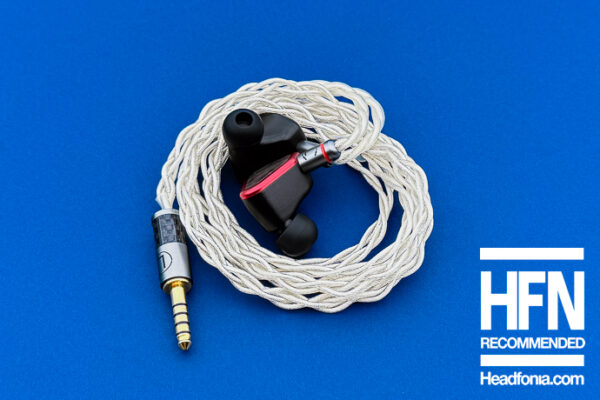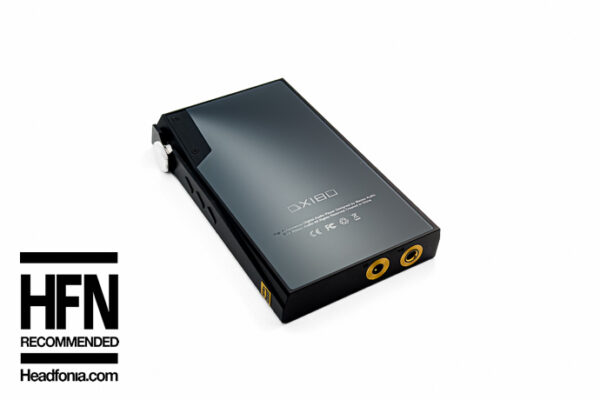A warm and mellow IEM like the e-Q7 naturally is good for medium to slow paced music. Here in Asia, we have plenty of slow and mellow music, as most of the audiophile female vocal CDs are generally very mellow. In the western music catalog, it’s stuff like Madeleine Peyroux, Pink Martini, Carla Bruni, Corinne Bailey Rae, Norah Jones, and such. If you are an audiophile and you live in Asia, then you probably know the type of female vocals that I’m talking about. I think the e-Q7 is perfect for music such as Emi Fujita, Susan Wong, and the likes of them. The e-Q7’s midrange has quite a wonderful tone for these female vocals. The vocals sound very relaxed and soothing, with a decent amount of midbass that often goes together with the vocal in these music.
I tried the e-Q7 for playing some mild Blues/R&B from the soundtrack of Cadillac Records, featuring Mos Def, Beyoncé, Raphael Saadiq and others, and although it’s quite good for that particular music, I do prefer the SE530’s rendition which is livelier and has a deeper hitting bass, while still maintaining a full and smooth vocal. However, that’s just me, and I can see that someone else would prefer the e-Q7 over the SE530.
When I played Harry Belafonte’s Live at Carnegie Hall, the e-Q7 did equally wonderful with the signature smooth vocal. However, moving to the SE530, it becomes apparent that the e-Q7 doesn’t really have the technicalities to compete with the triple driver SE530. Soundstage image is much more two dimensional, the background sounds are less distinct and less detailed, and the bass is weaker. Harry Belafonte’s vocal also has a much better presence and liveness on the SE530 than it is on the mellower sounding e-Q7. I moved to a different recording, but equally good: Buena Vista Social Club is highly regarded Cuban Jazz session with quite a superb recording quality. Again, nice and warm presentation from the e-Q7, but I’m not getting a good soundstage image through the e-Q7, which is quite shocker, considering the superb recording of this CD. The SE530 is again quite ahead, where I find the treble to be livelier, the bass to hit deeper and stronger, better transients and a more three dimensional soundstage.

It’s probably unfair to pitch the e-Q7 against the triple driver SE530. But when you notice that the e-Q7 sells for $300+, then you can understand why I did so. The SE530 is also very good with midrange, and I think both of them are similar in that sense.
I also tried playing some tracks from U2’s Joshua Tree and Rolling Stones’ Jump Back. The SE530 is pretty good with both of them, but the e-Q7, though it performs admirably, simply doesn’t strike a match with the more energetic music. I also notice that on this recording, the SE530’s soundstage again is far more three dimensional than the e-Q7. Playing a moderately energetic rock such as the above, I can appreciate the faster transients and the livelier presentation of the SE530, but more than that, the e-Q7 somehow has a signature mellow sound, and this is what I think creates a mismatch with rock. The e-Q7’s transients is also noticeably slower than the dual driver IEMs such as the q-Jays and the DBA-02.








Noir
Great review there, even if i haven't auditioned at least i got the impression before buying it.
if its true that it tuned for asian/japanese music then i'll be happy to buy it since almost 95% of my library are japanese music.
Mike
I wouldn’t say “tuned for asian/japanese music”, but it does have a mellow character that suits female vocals very well.
HC
Hi Mike,
Thanks for the review.
May i know how do they compare against the Klipsch Image X10?
Mike
Hi HC, sorry, no experience with the X10. 🙁
Alexei
Hi, guys im translating this article into russian for my friends. Could you explain with more details the meaning of word “transients”. Perhaps some synonyms or something like that. Thanks in advance. From Russia with respect.
Anonymous
Hi Alexei,
Thanks for the effort for doing the translation.
I tried using Google Translate and come up with some words in Russian
that I am not sure what it says:
http://translate.google.com/#en|ru|transients%0A
Anonymous
If you take a cymbal and hits it, it would make a “crash” sound.
A fast transients would be “crash!” and that’s it.
A slow transients would be something like “crrrrasssshhhhh”.
Or say you have three instruments playing together at the same time.
Fast transients would be “crash! boom! bang!”. Every instrument is clear
and distinct.
Slow transients would be “crrrrashshhsbbbbbooombmbbmbaaaanngggggg”. The
instruments are mingled together and doesn’t sound distinct.
Hope that makes sense 😉